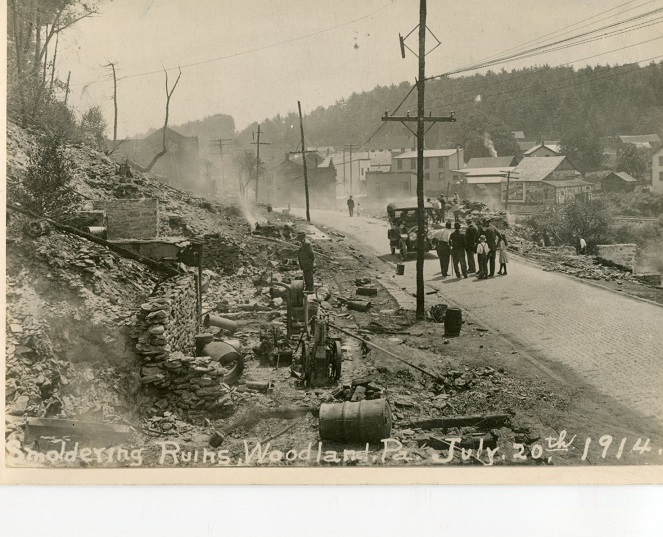Settlements in Clearfield County’s Bradford Township go back to the earliest years of the county’s formation.
The village of Woodland sprang to life with the coming of the Pennsylvania Railroad and the original Hope Brick Works in 1867 shortly after the end of the Civil War.
Woodland became one of a number of brickyard towns that stood firm, for decades, on the landscape of Clearfield County.
It had easy access to the vital threesome of clay, coal and railroads that were needed to produce and transport the raw materials and finished bricks from the earth, to the refractories and to available markets.
Like other brickyard towns, Woodland became filled with workers and their families. It also sustained itself with the small business and services upon which those families relied to thrive and, hopefully, prosper.
Long before Route 322 was upgraded, a trip to Clearfield was a five-mile walk or rough wagon or early car ride over muddy and often rutted roads. Some people made the short jaunt by train.
Following a typical pattern of the day, most Woodland residents stayed, for the most part of their lives in their own town.
People lived, raised families, shopped, worshiped, went to school and sometimes entertained themselves without often travelling far from Woodland. As a result, streets of businesses and homes grew and bustled with activity.
This danger has been present even in modern times. Houtzdale, in the 1990’s, lost the equivalent of three downtown borough blocks to fires.
A nighttime fire, starting in a restaurant, on July 18, 1914, spread out of control to burn 18 buildings in Woodland’s main street.
Water supplies to fight such a fire were simply inadequate and the town had no fire-fighting force or equipment. The Harbison-Walker Refractory, in Clearfield, sent its equipment to quell the blaze.
The Clearfield Fire Company arrived by train and had to load its horse-drawn steam pumper on to one of the New York Central’s flatcars because the roads, at nighttime, were impassable for both the heavy equipment and the horses. Locals dammed the waters of a small nearby creek to supply the pumper. Thankfully, no lives were lost.
Most everyone today agrees that local volunteer fire companies are worth their weight in gold.
